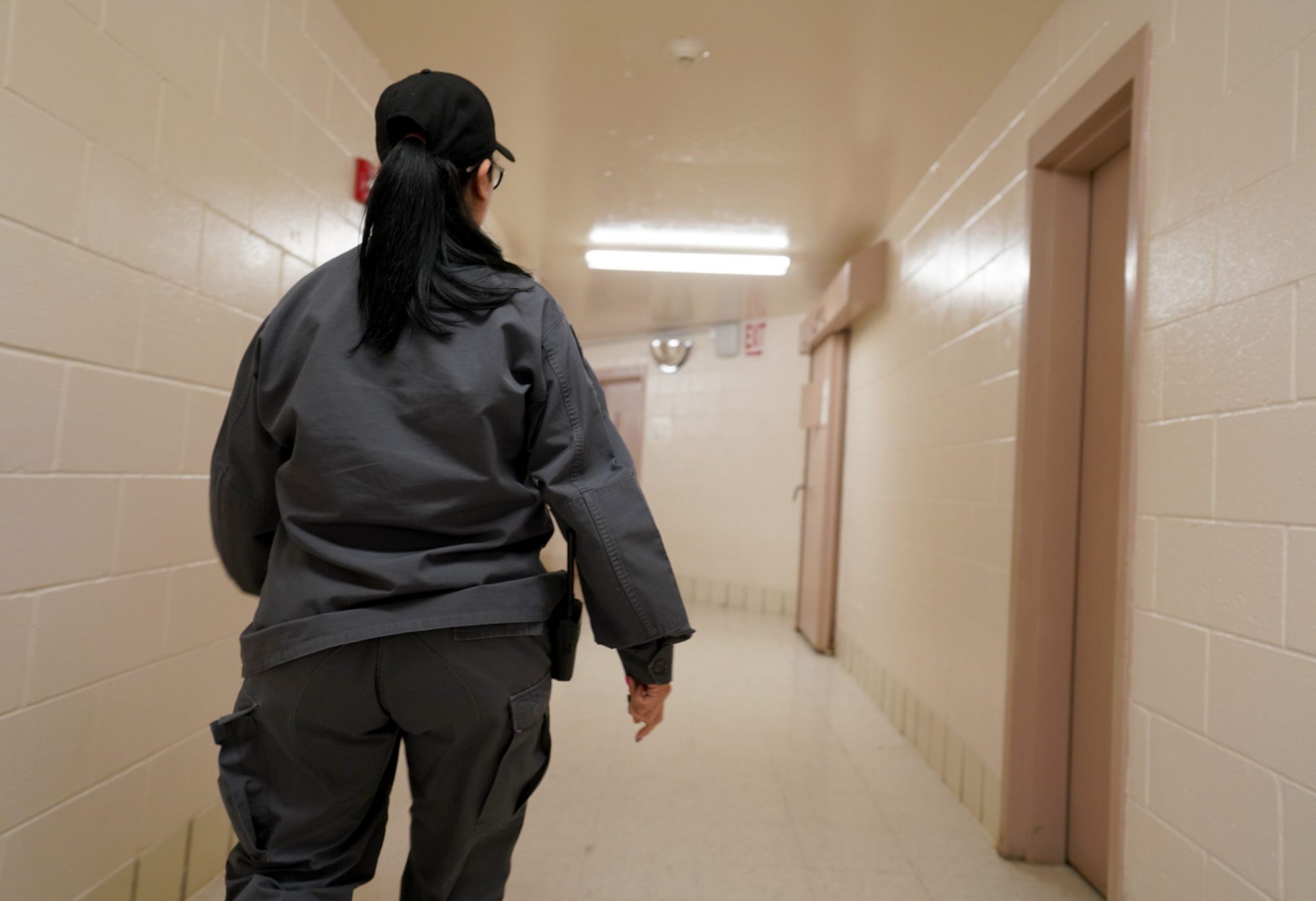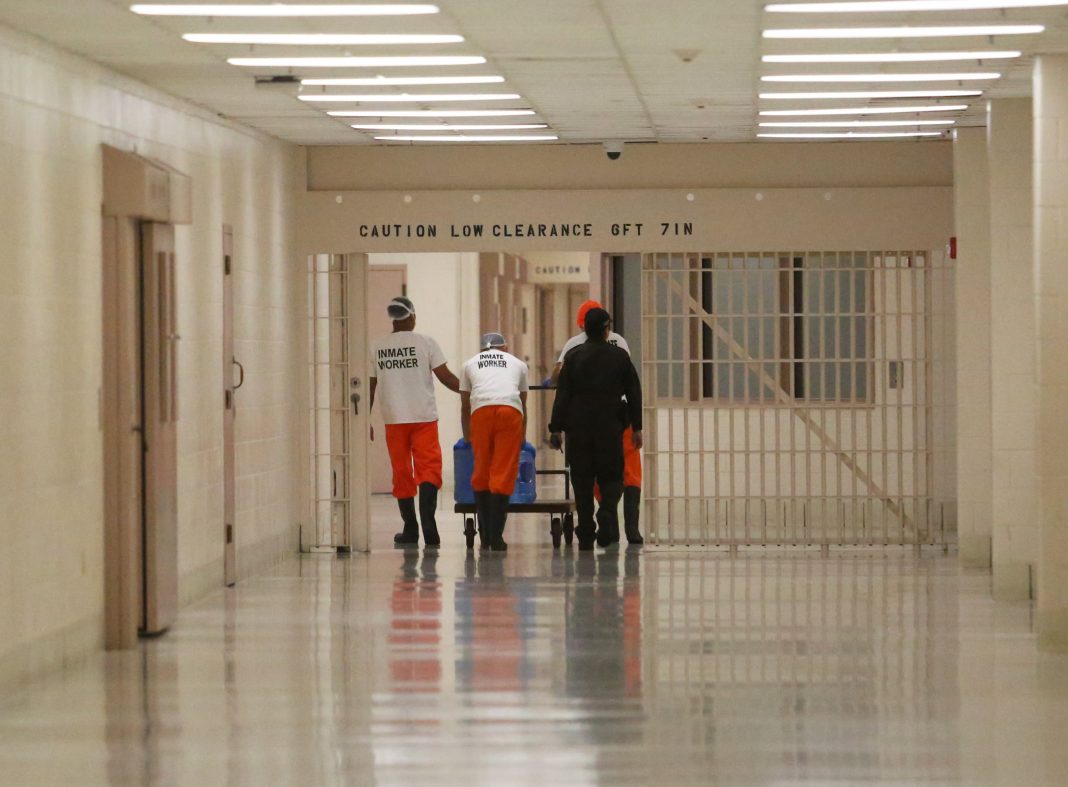Editor’s note: This is the second in a three-part series covering the decades-old overcrowding problem at the Hidalgo County jail.
A decade before the 2003 completion of the Hidalgo County Adult Detention Center, two officials with the sheriff’s office told commissioners court the county was growing.
And they said that growth is causing the old jail’s inmate population and that it was becoming a problem, according to minutes from a June 18, 1993 meeting.
The officials suggested a new jail was needed.
Instead, the commission responded that judges needed to process cases faster.
Nearly 30 years later, as The Monitor reported Sunday, the county is in a deja vu moment with chronic overcrowding and during an interview, current County Judge Richard F. Cortez said the faster processing of cases is one aspect of a complex issue.
But 20 years ago, commissioners court and then-county judge Eloy Pulido could have prevented the current situation by funding a 2,000-bed facility for $56.5 million instead of the 1,232-bed facility that cost approximately $42 million.
And that facility took years of wrangling and threats from the Texas Commission on Jail Standards to come to fruition. On Sept. 7, 1997, The Monitor reported that that agency had threatened the county with legal action if it didn’t either build a new jail or expand the current jail at the time, which was operating under an administrative order allowing it to have a maximum capacity of 597 inmates. That same day, that jail had 761 inmates, according to The Monitor report.
Jack Crump, then-executive director of the state agency, told the county during a workshop that building a new facility would better serve the county’s long-term interests.
And just like today, during the 1990s, Hidalgo County was housing inmates in other counties.
On Feb. 28, 2000, the Landmark Organization presented the county with a study on the design and construction of a new jail that included multiple options — much like the $100,000 study conducted by ERO Architects that was completed in March.
“The project delivered will provide Hidalgo County a Sheriff’s Department Enforcement Center and County Jail Detention Facility consisting of 1,232-inmate bed capacity, with infrastructure to support a total of 2,000-beds with no off-site work,” the Landmark Organization’s study stated.

This study gave the county four options that ranged from four-story designs to two-story designs with anywhere from 1,200 to 1,600 to 2,000 beds.
At the low end, the cost would have been $37.9 million and at the high-end, the 2,000-bed facility, the cost was at $56.5 million.
By May 5, 2000, The Monitor was reporting that the cost of the new jail was making commissioners nervous about the price-tag, but on June 28, 2000, the commissioners court contracted with the Landmark Organization for a 1,200-bed jail at a cost of $42 million.
Pulido, then the county judge, remarked that “and now we’ve made sure that the needs of Hidalgo County will be met through the year 2020.”
The Monitor in November of that year reported that commissioners had broken ground on the new jail.
However, on Aug. 3, 2001, Phillip A. Etheridge, a former professor with the then University of Texas-Pan American, wrote a letter to then-Sheriff Henry Escalon, to Pulido and the rest of the commissioners court warning that based on inmate population statistics, he believed the jail would be at capacity as soon as it’s constructed.
Etheridge, an expert on jails, had consulted with the county at the time on the construction of the new jail and had recommended that officials pursue the 2,000-bed jail instead of the current 1,232-bed facility.
“Although much of this letter has reviewed the last 18 months of jail statistics the real challenge for county leaders is going to be the next 18-36 months,” he wrote. “If the need for jail bed-space continues to increase at the current rate (10 per month) by July, 2003 the average daily inmate population will be 1,200 inmates. Therefore, a new 1,232-bed jail will be filled to capacity when it begins operation.”
Those concerns were discussed at an Aug. 16, 2001 commissioners court meeting and a report from the Edinburg Daily Review reflected concern from officials as the jail’s inmate population increased, as Etheridge predicted.
A report from The Monitor on that same day said Hidalgo County had spent $8.2 million since 1995 in housing inmates in other counties.
By April 24, 2002, the commissioners court was advised that it had 30 days on whether to expand the jail to 1,400, 1,600 or 2,000 beds per its contract with the Landmark Organization, according to the Edinburg Daily Review.
That never happened and on June 11, 2003, just 10 weeks after the Hidalgo County Adult Detention Center opened, The Monitor reported that commissioners court was already seeking a budget amendment for $400,000 to house inmates in other counties.
Hidalgo County Sheriff J.E. “Eddie” Guerra said he was there for those meetings and remarked that Escalon, the sheriff at the time, was “very, very upset” because he knew the 1,232-bed facility just wasn’t enough for the fast-growing county.
“We’ve been paying for the decision made by county government back in 1999,” Guerra said. “We’ve been paying for that decision ever since.”
More than two decades later, Guerra reflected on Escalon’s challenging task to meet state mandates while managing costly overcrowding issues and trying to fix this chronic decades-long problem.
“I’m in his shoes right now,” Guerra said.
PREVIOUS COVERAGE:
Hidalgo County jail overcrowding nearly untenable after decades of inaction





